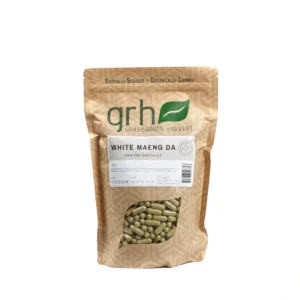Kava, a unique plant native to the South Pacific islands, has long been celebrated for its ability to encourage feelings of calmness and connection. For centuries, island communities have used kava as part of traditional ceremonies and daily life, making it an integral part of their culture. While it shares similarities with kratom in terms of its longstanding use, kava stands out for its distinctive properties. In this expanded guide, you’ll discover the ins and outs of kava, how to enjoy it in modern times, and why it continues to captivate users around the world in 2024.
Kava, also referred to as “kava kava,” is a fascinating plant with a rich history. Originating from the South Pacific, particularly in countries like Fiji, Vanuatu, and Tonga, it has been a crucial part of island life for centuries. Beyond its cultural significance, the way kava is propagated adds to its intrigue. Unlike many other plants, kava does not produce seeds. This means that every kava plant we see today is a clone, carefully cultivated from cuttings of original plants. This process, known as vegetative propagation, requires meticulous care to ensure the survival of this ancient plant.
One of the defining aspects of kava is its active components, called kavalactones. These natural compounds interact with the body in specific ways, contributing to the plant’s calming and balancing effects. Kavalactones work by influencing the central nervous system, creating a sensation of calm and tranquility. Out of the numerous kavalactones found in kava, six primary compounds dominate, shaping what is called the plant’s “chemotype.” This chemotype determines the strain of kava and its overall effect, allowing for different experiences based on the specific strain consumed.
Kava comes in different varieties, each offering a unique experience depending on its kavalactone profile. These profiles help us categorize kava into three primary types: uplifting, grounding, and balanced. Understanding these categories will help you choose the right kava for your needs, whether you’re looking for a daytime boost or an evening wind-down.
While each type of kava has its own specific effects, there are a few common experiences that most people report. Kava is renowned for promoting a sense of ease and contentment, without being overly stimulating or dulling. Here are some of the key attributes of kava:
Kava can be consumed in several ways, each offering its own benefits depending on your preferences. While kava is most commonly available in capsule and powder form, there are also other creative methods for incorporating it into your routine. Here are a few of the most popular ways to take kava:
In today’s fast-paced world, kava continues to offer a natural way to enhance your sense of calm and well-being. Whether you’re drawn to its mood-enhancing properties or its ability to help you unwind, kava is a versatile plant that can fit seamlessly into your routine. With its rich history and variety of consumption methods, kava remains a popular choice for those looking to create moments of relaxation and connection. Just remember to start with small, mindful servings to find the balance that works best for you.
Visit our website for information of kava products.



Copyright © 2024 – All Rights Reserved – Terms & Conditions – Privacy Policy
Please note that the material presented on this site is intended solely for informational purposes and should not be relied upon as the sole basis for decision-making. It is advisable to consult multiple sources before making any decisions. These products are not intended to prevent, treat, cure, or diagnose any disease. We do not assert any legal claims or offer legal advice. While we strive to provide accurate and up-to-date information, the complexities of legal matters regarding Kratom may vary. The legal age to buy kratom varies by state, please ensure you meet the legal age requirements before making a purchase. Using Kratom daily is not advisable. To prevent the development of tolerance and dependency, use it responsibly and integrate regular breaks into your consumption. Individuals with underlying health conditions, pregnant or nursing women, and those currently taking medications should seek guidance from qualified healthcare professionals before incorporating Kratom into their routine. Please be aware that the U.S. Food and Drug Administration (FDA) has not lawfully marketed Kratom as a dietary supplement, and that we do not ship to states and cities where Kratom is prohibited by law.